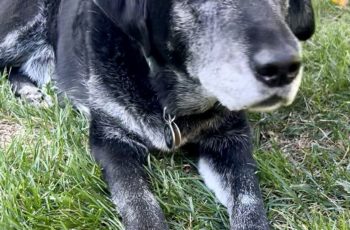by Janice Jones |Last Updated 08-26-2021
The Icelandic Sheepdog is an old breed that has stayed
around for a reason. This breed is loyal, cheerful, attentive and hardy with plenty of
energy to play.
At the same time, they are affectionate and ready to cuddle
with their family. They have a personality that will make them fit right in as
a member of the family.
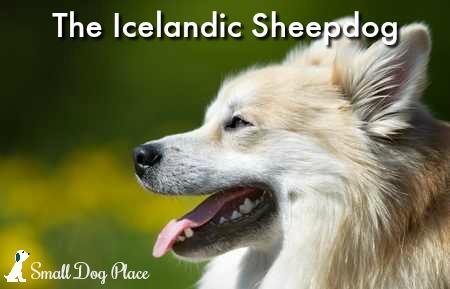
Quick Facts
Known as the “Dog of the Vikings” due to its history
The breed has changed very little due to Iceland’s isolation
Iceland’s only native dog
Other Names Used:
- Canis Islandicus
- Friar Dog
- Icelandic Spitz
- Iceland Dog
Affiliations: AKC, CKC, and UKC Herding group
Size
Height: 16-18 in. (41cm-46cm)
Weight: 25-30 lbs (11-14 kg)
Coat Type: Two types, either long or short but both are
thick and water resistant
Colors:
- Black and White
- Chocolate and White
- Gray and White
- Fawn and White
- Cream and White
- Gold and White
- Sable and White
- Tan and White
- White Tan and Black
- Red and White
Markings:
- Chocolate Markings
- Black Markings
- Black Mask
- Cream Markings
- Gray Markings
- Piebald
- Reddish Brown Markings
- Tan Markings
Country of Origin: Iceland
Activity Level: The Icelandic Sheepdog is known to be a
fairly active dog, although regular exercise is enough to relax their energetic
temperament.
Life Expectancy: 12 to 15 years
Good with Children: These dogs are known for being great
with kids. Their warm and hospitable temperaments welcome the company and
playfulness of children.
Thanks to their size, they do not risk knocking over
small children as quickly as some breeds.
That being said, all children must be taught how to interact with a dog before
they do so and small children must always be supervised while playing.
Altogether, this breed is appropriate for families.
Good with Other Pets: These sheep dogs tend to get along
alright with other pets. This is especially the case should they be raised
alongside other pets. The more that a dog is exposed to fellow canines, the
more relaxed it will be around them.
Being herding dogs, they are not likely to
harm smaller animals, and their size
keeps them from doing so accidentally. They do not have much of a prey drive so they won’t confuse those smaller pets
for prey either.
Dog Breed Ratings Got You a Little Confused?
Here’s a little help in understanding them
- Playfulness: Most Playful = 5 Least Playful = 1
- Affection: Most Affectionate = 5 Least Affectionate = 1
- Friendliness Towards Strangers: Most Friendly = 5 Least = 1
- Good With Children: Great= 5 Not Good with Children = 1
- Good With Dogs: Great = 5 Not Good Around Dogs = 1
- Exercise Required: Extensive Daily Exercise = 1 Minimal = 1
- Ease of Training: Very Easy = 5 Difficult = 1
- Watch Dog: Excellent Watch Dog = 5 Minimal = 1
- Grooming: Time Consuming = 5 Minimal = 1
- Shedding: Heavy Shedder = 5 Minimal = 1
- Cold Tolerance: Well Tolerated = 5 Poor Tolerance = 1
- Heat Tolerance: Well Tolerated = 5 Poor Tolerance = 1
History of the Icelandic Sheepdog Breed
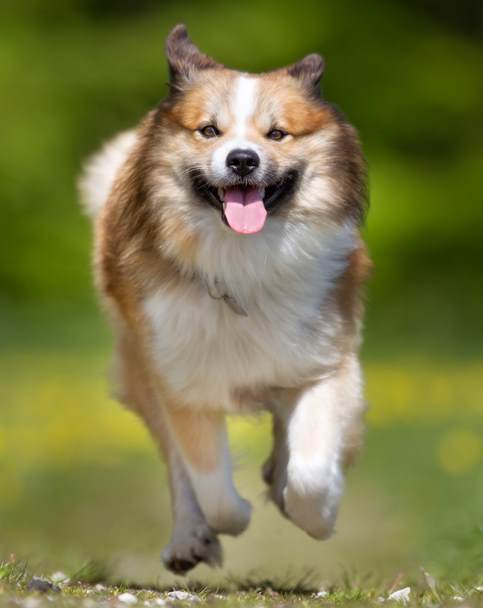
The Icelandic Sheepdogs is a spitz type breed, one of the
most popular breed types in the world. Ancient spitzes are the bases for many
of our modern breeds.
They are known for
their fox like snouts and northern European breeds,
such as this one, are known for their thick coats. A clue into their history
can be found in their name, these herding dogs come from Iceland.
It’s likely that this breed originated from Scandinavia.
There’s stuff to back up this theory, there are skeletons that many bare similarities to the sheepdog we know
today.
These dogs are well known as the Viking Dog too, another name pointing
to their history. Vikings would have used these dogs to assist in maintaining
their herds. This is considered to be the way in which they managed to get to
Iceland, their ultimate country of
origin.
Historical accounts suggest that when the Vikings came and
took over Iceland in the 9th century, they brought these dogs with them. As a result
of their isolation in the country, there are very few other breeds that live
there.
To this day, the breed remains the most common dog in the country.
Having lived there for what is now a millennium, it’s not likely that they’re
going to die out anytime soon.
While the breed has a steady population now, this was not
always the case. There was a significant
portion of Iceland’s history in which their existence was threatened due to a
myriad of problems.
There are cases of disease outbreaks and famines that
resulted in significant drops in the
breed’s population. Towards the end of the 10th century,
there was a very considerable famine in
the country, leading many of these dogs to die so that more food could be given
to the people.
As result of this decrease in population, the price for an
Icelandic Sheepdog was that of a horse or a cow.
The breed carried on in the country for centuries, surviving
many successive famines and disasters alike to the one in the 10th century.
They found themselves most threatened by extinction in the late 19th century
when the majority of their population was killed by disease.
Their isolation was further compounded when there was a
ban on bringing animals into the country in 1901. This ban was followed by the
two World Wars. Once again, it would have been expensive to own one of these
dogs and impractical to do so. Instead, people would spend their money on food.
This hardy breed
prevailed. This was through the efforts of the Icelandic Dog Breeder
Association, which was founded in 1969.
In between the 1930s and 70s, a man named Mark Watson helped to
introduce these dogs to the outside world. He helped to breed them into a more
consistent appearance and temperament, another step towards their officiality
as a breed. On top of this, he brought Icelandic Sheepdogs to the US and other
countries.
Today, the Icelandic Sheepdog is not an especially common
breed, ranking as the 153rd most popular breed in the AKC.
Personality
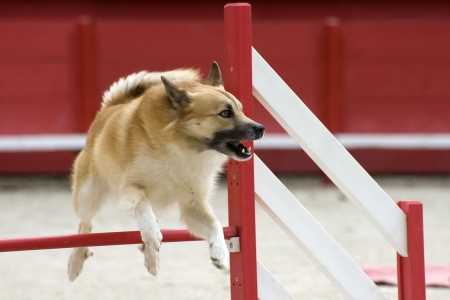 The Icelandic Sheepdog makes an excellent Agility Dog.
The Icelandic Sheepdog makes an excellent Agility Dog.The Icelandic Sheepdog is an affectionate family pet with
plenty of playful energy. Being a herding dog, they love to be around their
herd, which is their family in this case.
As previously stated, these dogs can be great for families,
especially with younger children. The breed’s size makes them unlikely to
accidentally harm children, and they
aren’t known to bite frequently either.
They will appreciate having someone to
spend time with, whether it’s an adult or a child. These dogs are warm
companions and playing with them will disperse some of their energy that can
otherwise manifest in bad behaviour.
Small children should always be monitored
when playing with a dog, and people of all ages should be shown how to interact
with a dog before doing so.
While they tend to be warm towards people and affectionate
with their families, this is not the same for fellow canines.
These friendly, affectionate traits make them an excellent choice for work as therapy dogs. These Viking dogs
tend to be a bit more protective of their territory with other dogs.
It is essential
to introduce an Icelandic Sheepdog to many animals as well as people to help
reduce their anxiety around them.
Raising these dogs alongside others will also
make them less anxious. However, they
don’t enjoy sharing the house with new pets once they’re grown up.
This breed is known to be relatively
vocal, mostly when barking at animals outside their territory. Birds are noted
as being a favorite target for the Viking
dog, as historically they would have had to protect their herds from predatory
birds.
While it is not the most vocal breed, it’s still not ideal to have them
living in an apartment. If they are living in an area with high population
density, whether it be the number of people or wildlife, they are more likely
to sound off to warn their owner of something’s presence.
The Icelandic Sheepdog is also characterized as an
intelligent breed. They tend to pick up
lessons quickly and have some enthusiasm for learning.
This makes potty
training relatively easy, although they
can also quickly learn flaws in their owners’ training.
It is crucial, as with any breed, to make
your yes mean yes and your no mean no.
This breed isn’t infamous for having a lot of wanderlust
potential. Being herding dogs, they prefer to stay put on their property and
make sure nothing goes awry. This is good for owners, as it lessens the
expenses in preventing a dog from running away.
Given their size and their
temperament, it’s not necessary for them to have a fence keeping them on the
property. A simple electric fence would suffice
just so they can’t get out into the street or get lost.
Since the Icelandic Sheepdog enjoys being around their families so much, this
breed is known to have separation anxiety.
While they are not the most anxious
dogs, they might not be the best for owners who spend most of the day away from
home. Their sensitivity towards being alone is one of the few things they are especially
sensitive about, as they are pretty hardy dogs.
They can withstand the cold
well due to their coats, although, this is not the same for the heat. No dogs
should be left out in any sort of extreme weather for extended periods of time.
As previously stated, these dogs have plenty of playful
energy that can manifest in negative behaviour if it is not satisfied. Whether
it’s chewing on furniture or just being antsy, it’s best for the dog’s health
to release some of their excess energy.
Regular exercise will keep them healthy
and relaxed, making them happier altogether. This can be accomplished through
playing fetch or a walk around the neighborhood. They make excellent agility dogs because of their energetic temperament.
Grooming
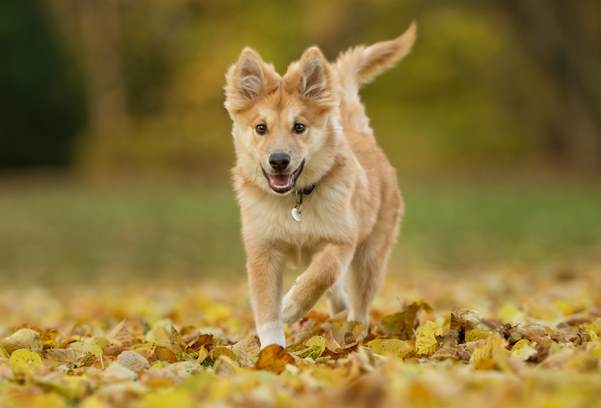
This breed isn’t known for being especially difficult to
groom. Their thick coats will shed
according to drastic weather changes, such as before the winter or summer.
They will shed their thick undercoat during these seasonal molts. During these times regular brushing and combing is needed to reduce the amount of hair that will begin to fall wherever they are.
Most
owners recommend brushing once or twice a week during the rest of the year. Regular brushing will prevent the thick coat from getting matted. Due to their reasonably regular shedding, they really only
need bathed as needed or at least twice a year.
They are not hypoallergenic meaning that they would not be a good choice for someone with allergies.
While they don’t need their nails painted, they certainly need them clipped. If a dog’s nails get to
be too long, they can become
uncomfortable and dig into their paws.
The Icelandic Sheepdog is known for
having nails that grow relatively
quickly. Most owners recommend clipping them at least once a month. You can
tell if a dog’s nails become too long by listening to them clicking against the ground as they move. If you hear the
click, it should be time to clip.
Dogs aren’t famous for having fantastic dental care, but it
is an integral part of the grooming
process. Brushing a dog’s teeth will prevent tartar buildup, keep their teeth
clean and make their breath fresher. Most owners recommend brushing a dog’s
teeth at least twice a week.
Another vital part of
the grooming process is checking a dog’s ears. Dogs’ ears can hold in bacteria
that will cause ear infections. Thanks to the shape of the Icelandic Sheepdog
ears they have more airflow, preventing things from getting stuck in them.
All
the same, it is recommended to check and clean a dog’s ears at least once a
week. This will remove excess wax and any bacteria that has been caught in it.
For the Icelandic Sheepdog Lover
Health Issues
Before buying any pet, an owner must be prepared to pay for
any sort of preventative or emergency healthcare. This is on top of making sure
they get to the regular vet visit.
Dogs get sick like people do, so it’s
important to be ready for any sort of health issue down the road. There are
also outside problems like ticks and fleas that need to be taken into
consideration.
It’s important when getting a purebred breed that you look
into the sort of health issues that the breed is prone to.
While some dogs of a breed may not be affected by any of the
health issues they are known for, it is still crucial when buying one. The
Icelandic Sheepdog is known to be a reasonably
healthy dog with a long lifespan. All the
same, it is better to be safe than sorry when it comes to knowing their possible health problems:
Another critical thing
to consider when purchasing a purebred dog is the source. It is crucial that
you know the breeder that you’re getting the dog from and their knowledge of
the breed.
Any qualified breeder will be able to answer any of your questions
about the breed and be able to pass health checks for their dogs. Any breeder
that suggests that this is unnecessary or seems to know very little about their
dogs should not be considered.
Pros:
- Make good watchdogs
- Hospitable and social
- Intelligence makes them easy to train
- Housebreaking is also easy due to intelligence
- Affectionate
Cons:
- Not excellent guard dogs as they are very welcoming
- Can be vocal
- Fairly rare breed
- Have some separation anxiety
- Shedding may be a problem during months of shedding
References
Breed Parent Club
The American Kennel Club
Does This Article Deserve Your Thumbs Up?
We always appreciate your support and encouragement. Your thumbs up means so much to us. Please like this article.
If you find this page or any page on Small Dog Place Helpful, or Useful in anyway, I’d love it if you would click the small heart found on the bottom right of each page.
You can also share or bookmark this page — just click on the:

Free Monthly Newsletter
Sign Up for Our Free Newsletter and get our Free Gift to You.
my E-book, The Top 10 Mistakes People Make When Choosing a Dog (and how to avoid them)


